- HOME
- ABOUT US
- SOLUTIONS
- Metal Roof PV Mounts and Systems
- Flat Roof Solar Panel Mounting Systems Solutions
- Tile Roof Solar Mounting Systems Solutions
- Solar Tracking Solutions for Commercial PV Projects
- Ground Solar Mounting Systems Solutions
- Floating Solar Solutions - PV Systems
- PV Solar Carport Mounting Systems Solutions
- Balcony Solar Panel Mounting Systems Solutions
- PRODUCTS
- PROJECTS
- COMPANY NEWS
- BLOG
- Contact Us
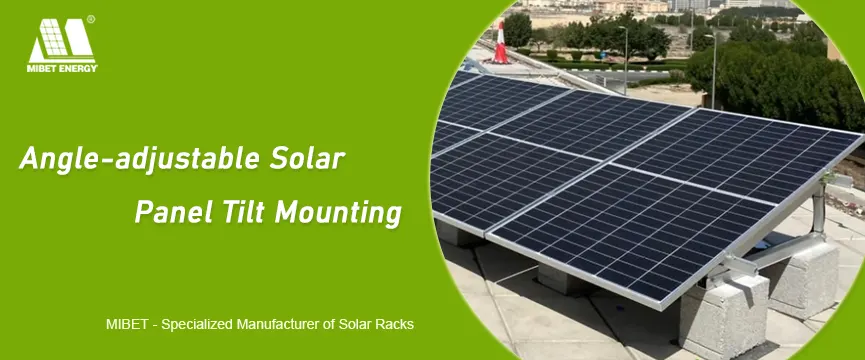
Are you truly maximizing the sun’s potential for your energy needs? Many solar panel systems, once installed, remain in a fixed position, which can lead to untapped energy gains as the sun's angle changes throughout the year. This means your system may not always be operating at peak efficiency. With the ability to easily adapt your panels to better align with the sun's path, you optimize energy capture during key seasons. This article will introduce you to how angle-adjustable tilt mounting brackets can enhance your solar setup's performance.
The Optimal Angle & Orientation for Solar Panels
The angle and direction of your panels impact how much power they make. So, getting the angle and direction right boosts their performance. If you're in the northern part of the Earth, face your solar panels south. If you're in the southern part, face them north. The sun stays mostly in the southern sky if you live in the north.
Many people are now choosing to install their panels facing west. The sun is not in the west all day, but it appears there during peak demand. You might not generate as much total power facing west, but you get more during those peak usage times. Your roof's layout and size will often decide if west-facing or south-facing makes more sense.
Angle also matters for solar panel output. For maximum power, aim for sunlight to hit your panels straight on. If you don't adjust your panels with the seasons, pick an angle that works best throughout the year for your location. The season and where you live are important considerations for finding the right angle.
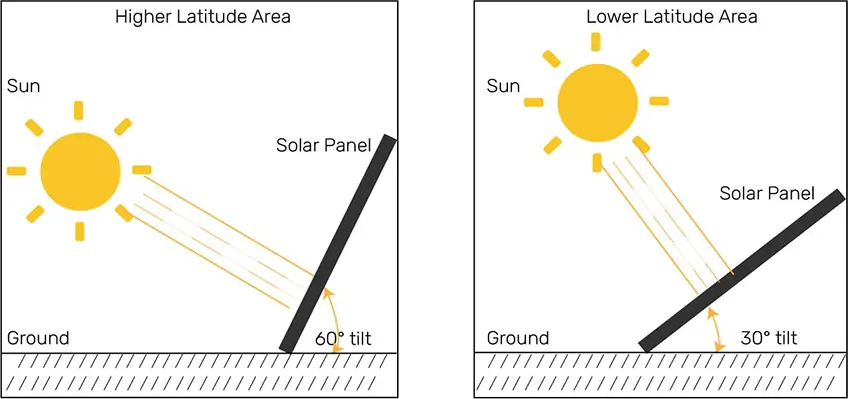
Los Angeles, CA, with a latitude around 34 degrees north, suggests a solar panel angle of approximately 34 degrees. For New York City, NY, at about 40.7 degrees north latitude, you might set your tilt angle to around 41 degrees.
Keep in mind that tilt angles shift as the sun's position changes with the seasons, by about 15 degrees. If your best angle is 30 degrees, it could drop to 15 degrees in July and rise to 45 degrees in January.
For those in Southern California, expect your ideal angle to go from about 19 degrees in summer to 49 degrees in winter. New Yorkers will see a range from 25 degrees to 56 degrees.
However, this guideline changes as you move beyond 30-45 degrees north. You'll need to adjust more for the Earth's curve. So, if you're in places like Alaska or Hawaii, it's better to use an online tool to pinpoint the optimal angle for your solar panels.
For instructions on how to calculate the optimal angle, refer to how to calculate solar panel tilt angle?
Using an Online Angle Tool
You can follow the latitude rule for your solar panels in most cases. However, if you live beyond 30-45 degrees latitude or require the most accurate angle, it's best to use an online calculator.
These online calculators, like PVWatts or Footprint Hero, use advanced algorithms to factor in various details such as your location's altitude, latitude, and longitude, as well as environmental factors like air temperature and wind speed. They even use 30 years of weather data to estimate very precise tilt angles for any location globally.
While these tools are great for fine-tuning your solar panel angle, the resulting boost in energy production is often small, around 0.7% compared to the simpler latitude rule. Therefore, while helpful for achieving the ideal angle, they aren't essential.
Types of Angle-adjustable Solar Panel Tilt Mounting Brackets
Adjustable solar panel tilt mounts come in manual, motorized, and tracking varieties. Single-axis trackers are a popular choice for large solar farms, while dual-axis options suit specialized applications needing high precision or for research. For your home and smaller projects, seasonal adjustments often strike a good balance between cost and performance. Deciding on the right adjustable mount means looking at your investment, maintenance, and the energy gains you want. Here are the adjustable mount types we offer.
Adjustable Mounting Base
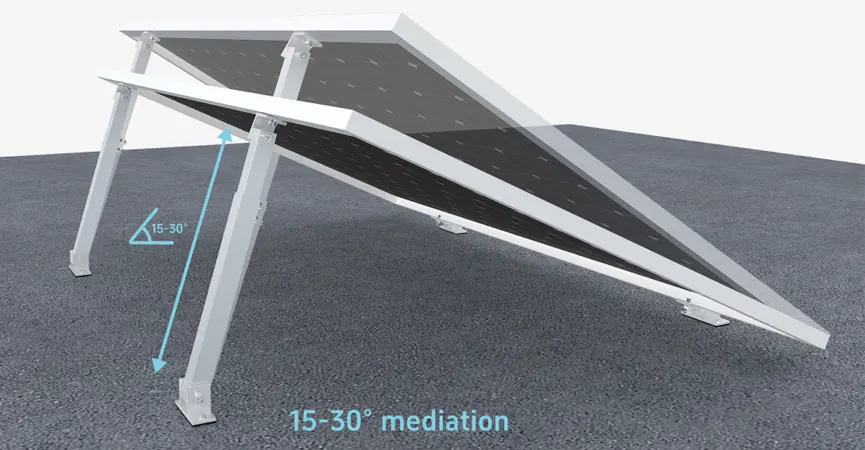
The mounting base offers adjustable tilt angles in three ranges: 10°–15°, or 15°–30°. We use waterproof EPDM rubber plates to help the tilted legs grip firmly, ensuring reliable performance even in snow or storms. Constructed with strong, rust-resistant anodized aluminum and durable 304 stainless steel, our kits are built to last.
We designed this mount to last for 25 years and back it with a 10-year warranty. It’s simple to adjust the leg angles and heights, making it easy to fit your solar panels on different roof slopes. This back leg adjustment primarily controls the tilt ranges, streamlining the installation process. These pre-assembled kits work well on different flat surfaces, like metal roofs, flat roofs, boats, the ground, garages, and RVs.
Adjustable Triangular Bracket
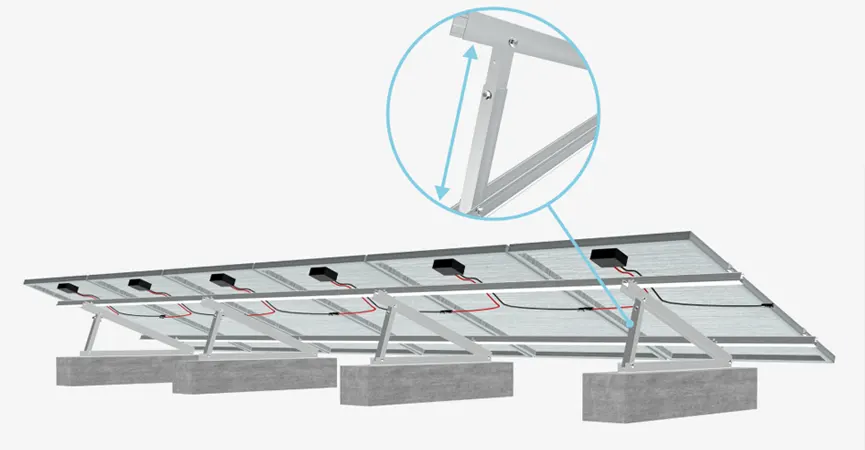
Crafted with strong, rust-proof aluminum, our Adjustable Triangular Brackets offer a foldable design that's simple for you to adjust. Mount them right onto your roof, floor, or a concrete block. Our aluminum brackets are anodized, resulting in a tough, protective layer for enhanced weather, damage, and rust resistance. You can adjust the tilt from 20° to 50°, depending on your panel size, and numerous holes enable seasonal angle changes.
With our adjustable triangles, you can adjust the panel angles on-site to avoid shadows and make the most of your space for even more panels. If you're putting them on the ground, you don't need a big foundation. Heavy concrete blocks will do the trick to support the frames. Just use strong anchors and screws to attach the frames to the blocks.
Mibet Adjustable Triangular Bracket: www.mbtenergy.com/flat-roof-adjustable-triangular-mounting-system
Solar Tracker
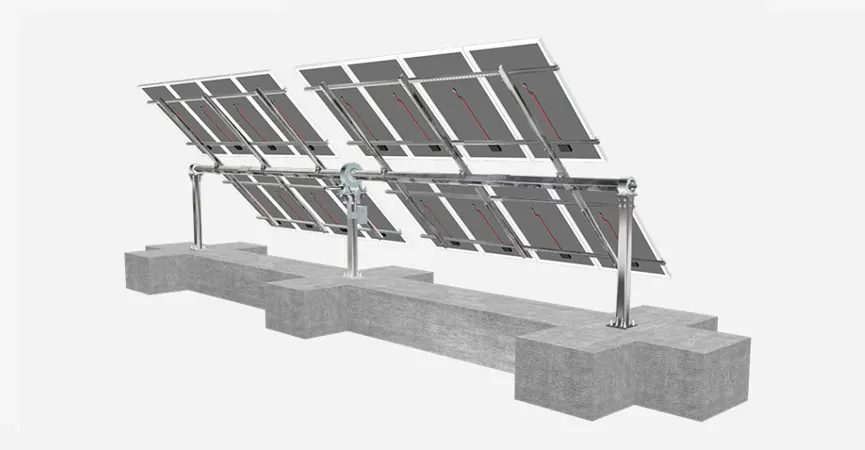
Our single-axis tracking systems enable maximum sunlight capture through automatic angle adjustment. The tracking is based on very precise astronomical calculations. With the added GPS and wireless, you can remotely monitor and control them.
Generally speaking, a solar panel with a single-axis tracker installed sees a performance gain of 25% to 35%, and a dual-axis tracker bumps performance up by another 5% to 10%.
Mibet TR2 Single-axis Tracker: www.mbtenergy.com/single-axis-solar-tracker-tr2
Achieving the Perfect Solar Angle with Solar Trackers
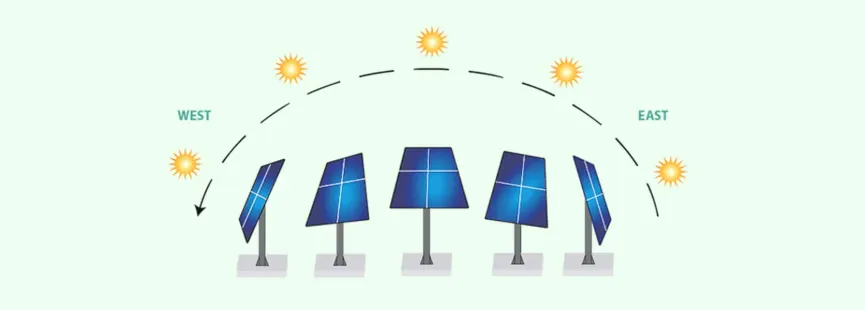
Adjustable brackets are a handy way to tweak your solar panel angle, but they're not the only way to get the most sun. If you're looking to grab even more solar power, solar trackers are another great option. Unlike those brackets you adjust by hand, trackers automatically turn and tilt your panels to follow the sun exactly. This constant aiming at the sun can mean more power, but they usually cost more upfront and might need a pro to install them since they've got extra mechanical and electrical parts.
Fixed or Adjustable Mounting?
Adjusting your solar panel's angle impacts your energy collection. For instance, with a system at 40° latitude, see the comparison in the table below to the optimal tracker, which always faces the sun directly.
| Type | % of optimum |
|---|---|
| Fixed | 71.1% |
| Adj. 2 seasons | 75.2% |
| Adj. 4 seasons | 75.7% |
| 2-axis tracker | 100% |
Adjusting the tilt twice a year gives your energy production a solid boost. Four adjustments offer a bit more, and this can be important if you need to maximize spring and fall output.
For instructions on optimal tilt angle, refer to optimum tilt of solar panels
Why Trust Us?
As a leading provider in the renewable energy sector, Mibet delivers reliable solar panel mounting brackets for large-scale solar power plants worldwide. We have over a hundred certifications, such as ISO9001, structural design patents, MCS certificates, SGS testing, TUV certificates, etc. Our adjustable solar mounts are compatible with all solar panels, ranging from very small 200W panels to the largest 700W panels (over 2.3 meters in height).

